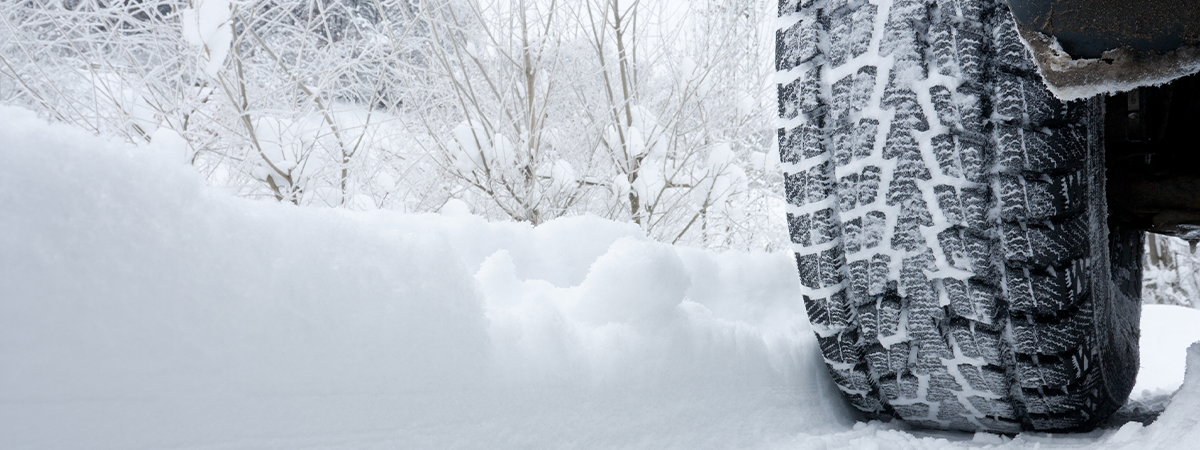
It’s a general rule of thumb that once the temperature drops to 7°C or less, it’s time to roll out the winter tires. But with the cost of winter tires and installation, it’s no small decision as to whether or not you should invest in them. So, what are the benefits of winter tires and why are they superior to all-seasons after the first frost hits?
Are Winter Tires Really Worth It?
While winter tires are not required by law, they are recommended by Ontario and other provincial governments. Winter tires have unique tread patterns and siping—the slits on the surface of the tire—that cut into the ice and snow while avoiding snow build-up in the tread. The design also pushes water away from the tire, helping to avoid uncontrolled sliding.
Winter Tires Vs. All-Seasons
For all-season tires, the rubber hardens at around 7°C and below, resulting in decreased traction and grip. The rubber in winter tires, however, is designed to stay flexible in cold temperatures. Improved flexibility allows for better traction in snow, ice, and slush as well as on cold clear roads and dry pavement. In fact, winter tires provide up to 50 percent more traction than all-seasons. With superior traction comes improved braking with less stopping distance required, and better handling. In treacherous conditions, a few extra seconds to stop could be the difference between a collision and a smooth ride.
What’s more, having winter tires extends the life of your summer or all-season tires.
As an added benefit, you’ll receive a 5%1 discount on your CAA Auto Insurance premium when you install four winter tires on your vehicle. Your tires must be on no later than November 20 and kept on until April 152.
How to Shop for Winter Tires
When looking to purchase winter tires, choose tires marked with a three-peaked mountain and snowflake. This symbol means they have passed a government-regulated traction test. Tires marked with M and S—for mud and snow—are not winter tires. They provide better traction than summer and all-season tires in light snow but not as much traction as winter tires in deep snow and cold temperatures. be sure to use four matching tires. Cars with only two winter tires significantly underperform in handling compared to those that have them on all wheels.
Purchasing an extra set of rims for your winter tires will also help you keep them in good shape. Mounting and dismounting your tires every season leads to premature wear on the tire bead, causing a higher risk of air pressure leak.
For a limited time, CAA Members can earn up to 120 CAA Dollars or receive up to $100 cash rebate with the purchase of four eligible Pirelli tires3.
Tire Maintenance and Installation Tips
Before having your winter tires mounted on your vehicle, give them a thorough inspection. Is the tread deep enough for another year? Are there any cracks, bald spots or missing chunks? As a rough guide for checking tread depth, insert a toonie between two treads. If the treads cover more than a quarter of the toonie, you’re good.
Lastly, be sure to have your winter tires installed by a professional, who will be able to ensure that they’re perfectly adjusted to your vehicle. Improperly installed tires can damage your vehicle.
Once your winter tires are installed, keep closer tabs on your tire pressure than you do in other seasons. Cold outside air causes the air inside your tires to contract, which affects traction, handling, and durability. If your tire pressure is low, find your nearest air pump and add air until you reach your recommended tire pressure.
When to Remove Your Winter Tires
The surest way to destroy a winter tire is to leave it on in warm weather. Because it’s made from soft rubber, balmy temperatures can burn off multiple layers of tread in just a few weeks, ruining the tire. Just as you put on your winter tires when temperatures dip to 7°C, it’s a good idea to get them removed in the spring when the weather starts regularly topping 7°C.
While having winter tires will help you get through the tough winter roads, accidents can still happen. If you do get stuck, stay calm. Don’t do any heavy lifting or try to push your car by yourself. To prevent carbon monoxide poisoning, make sure the tailpipe of your car isn’t blocked by snow. Then keep a window slightly open for fresh air and stay awake.
CAA Niagara is there for you on the road, providing 24 hours a day, 7 days a week Emergency Road Service (ERS) to Members. Should the unexpected happen, Members can request roadside assistance online, by calling 1-800-263-3616, or through the CAA Mobile app.
The CAA Mobile app is available for Android and iOS.
Discover more helpful winter driving blog content here.
1 Auto and Property Insurance are underwritten by CAA Insurance Company. Certain conditions, limitations and underwriting guidelines apply.
2 Underwriting rules apply. Rating applied to vehicles with four (4) winter tires that meet the winter tire designation. Installation no later than November 20, 2021 and removed no earlier than April 15, 2022.
3 Valid on purchases from October 4 to December 15, 2021.


 Ontario
Ontario